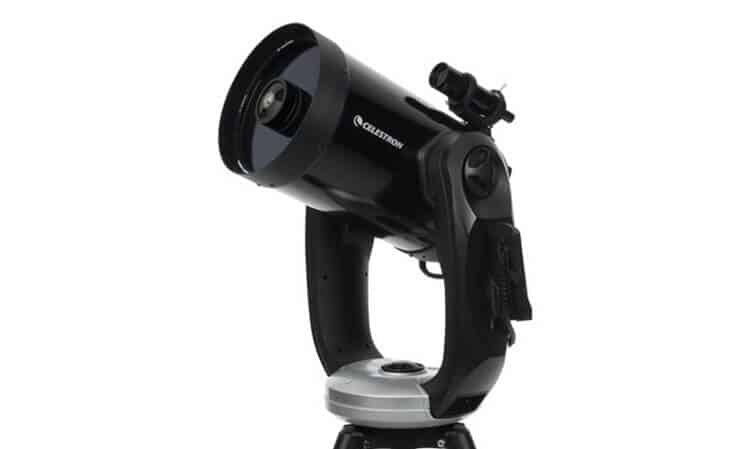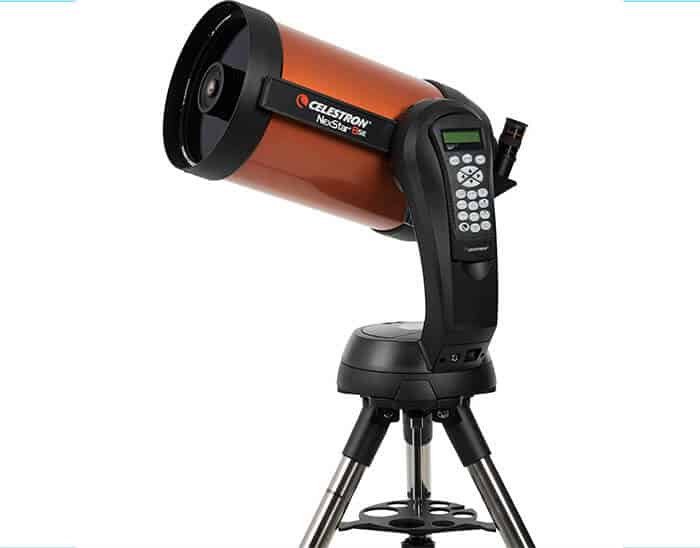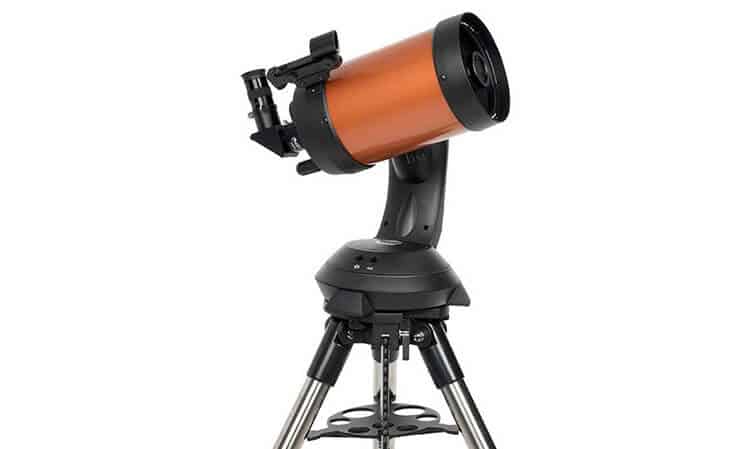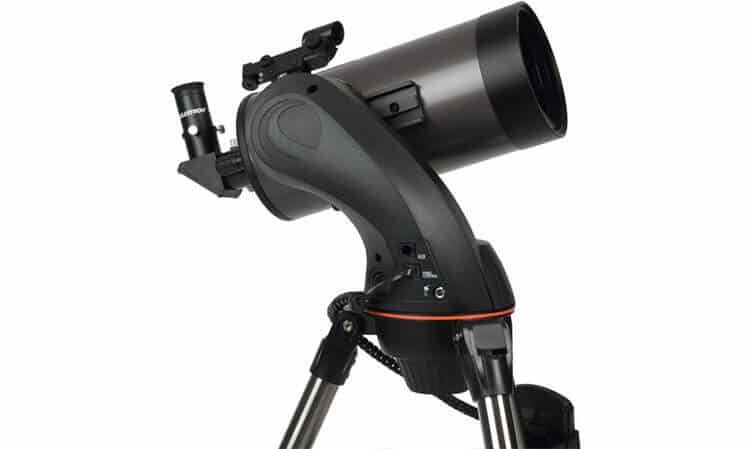Best CELESTRON TelescopeS
ULTIMATE BUYING GUIDE FOR 2020
ULTIMATE BUYING GUIDE FOR 2020
- Last Updated On:
Introduction
Stargazing and astrophotography are wonderful hobbies; but to indulge in either, you must have the right equipment. The right equipment for hobbyists and professionals alike generally includes one of the Celestron telescopes at some point.
The first Celestron telescope was introduced in 1964 and the company has led the industry in innovation and quality since. That is why the best Celestron telescopes are so frequently sought out.
There are many Celestron telescopes on the market today. Each can fill many needs, but you will want to find the right fit for your specific skill level and needs.
That is why we have put together this list of the best Celestron telescopes for a variety of needs (beginners and astrophotography) and budgets.
Quick Rundown
THESE ARE OUR TOP PICKS SUMMARISED FOR:
19th April 2024

- Fully computerized dual fork arm altazimuth mount with internal GPS
- 9x50 finderscope to help accurately find objects

- Made of highest quality material
- Affordable telescope for beginning astronomer

- 480x Maximum Magnification
- 7.99 Inch Aperture (203mm) with StarBright XLT Multcoated Optics

- Celestron’s iconic “orange tube” design
- Fully automated GoTo mount with database of 40,000+ celestial objects

- High quality 127mm (5") Maksutov-Cassegrain
- Quick-release fork arm mount
Table of Content
What To Look For In A Good Celestron Telescope
There are four main aspects to consider when buying a telescope. They are power, the eyepiece, the aperture size, and the focal ratio of the telescope. This is why each of these aspects is important to you:
POWER:
Buying a telescope with the highest power sounds the the perfect thing to do, but high power can be a Catch 22 situation. Yes, high magnification makes an object appear larger, but the light gathered will be spread over a larger area…creating a fainter image in your eyepiece.
To combat that, you will need to have an eyepiece with the right specifications to get the most out of a high power telescope.
TELESCOPE EYEPIECES:
Every telescope will be equipped with at least one eyepiece. An eyepiece for a telescope is rated in millimeters (mm). Smaller numbers offer higher magnification, i.e. a 10 mm eyepiece will offer a higher magnification than a 25 mm eyepiece. with smaller numbers indicating higher magnification.
It may sound as if you will get the best view of an object with a high power telescope with a higher magnification eyepiece, but that is a tad misleading. You will get a better view of a smaller area, but will have trouble viewing a larger object such as a nebula or cluster.
Another factor to consider is that it can be difficult to keep an object within the sight field of your telescope with a higher magnification eyepiece unless you are using a motorized mount. Additionally, you must keep in mind that higher magnification eyepieces require more light to provide a clearer image. To recap: lower magnification eyepieces make it easier to find and keep objects in view and require less light, so it is easier to view dimmer objects.
TELESCOPE APERTURE SIZE:
After that long dissertation on eyepieces, you might think there is nothing left to know about a telescope! You have to know about the aperture size, though. The aperture size determines a telescope’s ability to gather light.
Since light is the true key to a telescopes power to observe, the size of its aperture is key to better images. Aperture size describes one of two things, depending on the type of telescope you buy. With refractor telescopes, it refers to the diameter of the objective lens. With a reflector, it refers to the diameter of the objective mirror.
TELESCOPE FOCAL RATIO:
Finally, we come to the focal ratio of a telescope. You can calculate a telescope’s focal ratio by dividing its focal length by its aperture size. The focal length is the distance from the main lens to where the light converges to focus.
A higher focal ratio doesn’t necessarily mean a higher quality image. Frequently, it means you will get the best image for the money spent. It also means that you will be buying a longer telescope and may have trouble transporting your scope to your observation point.
There are many ways to categorize anything. Today, we are organizing our reviews by price point, skill level, and specialty. For example, we will review the best Celestron telescope under $3,000 all the way down to the best Celestron telescope under $100. Additionally, we will look at the best Celestron telescope for beginners and the best Celestron telescope for astrophotography.
So, without further ado, lets get to the reviews.
Top 6: Best Celestron Telescopes

APERTURE
280mm
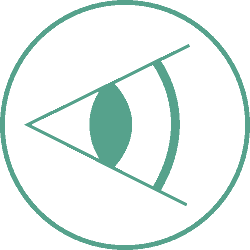
FOCAL LENGTH
2800mm

MOTORIZED
Yes

Mount type
Alt-Azimuth
Overall:
The Celestron CPC 1100 is one of the Celestron’s largest CPC telescopes. It has an extra-wide aperture, multiple computerizedfeatures, and the diffraction-limited technology.
This telescope has been designed to be easy to carry and simple to use. It provides amateur astronomers with a mesmerizing view of the moon, Sun, planets, and deep-sky objects. It’s the perfect instrument for anyone wanting detailed views of the nighttime sky.
Specs:
- Magnification: 661 x
- Focal length: 2800 mm
- Aperture: 11 inches
- Weight: 65 lbs.
- Focal ratio: 10
- Light gathering power: 1600 x
- GPS: 16 channels
- Excellent optical system with fully-coated lenses and mirrors
- Fully-computerized Alt-Azimuth mount with an ergonomic design
- The SkyAllign feature allows easy alignment with minimal corrections
- Automatically adjusted GPS with the date, time, latitude, and longitude from the orbiting satellites
- The database includes 40,000+ celestial objects
- It is a bit hard to carry around for some people
2. Celestron NexStar Evolution 8 Schmidt-Cassegrain
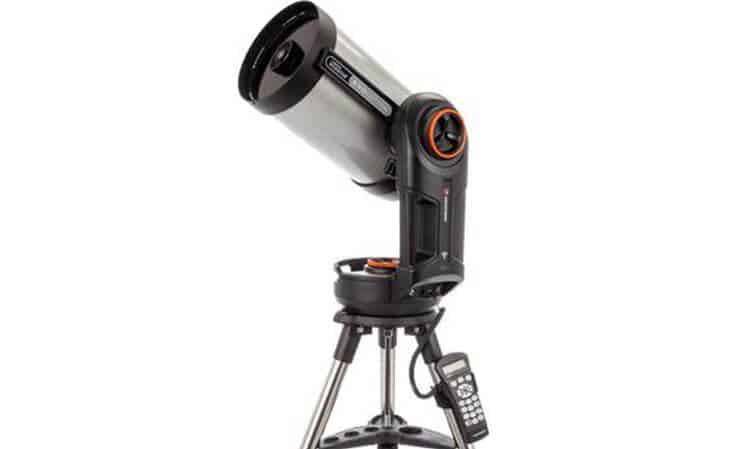

APERTURE
203mm

FOCAL LENGTH
2032mm

MOTORIZED
Yes

Mount type
Alt-Azimuth
Overall:
Celestron NexStar Evolution 8 boasts the StarBright XLT, which is Celestron’s system of cutting-edge optical elements that easily outclass any other similar components on the commercial telescope market.
One of the most unique features of this telescope is its Wi-Fi functionality, which allows you to use your mobile device like a remote control for the telescope. It’s simply the most user-friendly telescope on the market.
Specs:
- Magnification: 480 x
- Focal length: 2032 mm
- Aperture: 203.2 mm
- Weight: 63.7 pounds
- Focal ratio: 10
- Easy setup
- Multi-layer anti-reflective lens coatings
- Amazing light gathering ability
- Strong and durable mount
- Database of 40,000+ celestial objects, plus 100 user-defined
- Can be used for up to 10 hours at a time on a single charge
- Not suitable for terrestrial observations
- The GoTo list of Galaxies is not ordered alphabetically
- Some people complained about the Android app keeps on freezing

APERTURE
203mm

FOCAL LENGTH
2032mm

MOTORIZED
Yes

Mount type
Dobsonian
Overall:
Celestron NexStar 8 SE Telescope is an excellent choice if you want to learn more about space, planets, and stars in an easy and fun way.
This telescope can also be used for improving your research in the field of astronomy. With an aperture over 200 mm, it guarantees sharp and bright images, keeping stargazing interesting. It’s perfect for camping in the summer thanks to it’s design making it light and easy to transport.
Check our in-depth review of the NexStar 8SE GoTo Telescope.
Specs:
- Magnification: 400 x
- Focal length: 2032 mm
- Aperture: 203 mm
- Weight: 35.3 pounds
- Focal ratio: 10
- Easy to carry
- Excellent optics
- Metal, stable tripod
- Great, upgradable software
- Accurate GoTo tracking system
- Database of 40,000+ celestial objects
- Need additional power source
- It comes with a single eyepiece
- Minor eyepiece vibrations on focusing

APERTURE
125mm

FOCAL LENGTH
1250mm

MOTORIZED
Yes

Mount type
Alt-Azimuth
Overall:
The Celestron NexStar 5 SE Telescope presents accurate images of the celestial objects, with the touch of a button. It blends quality and portability to create a small, simple-to-use precious instrument that still appeals to even experienced stargazing enthusiasts.
This telescope is the ideal scope for beginners stargazing fans who are looking for a relatively inexpensive and easy-to-use telescope. This telescope offers a unique and an appealing way to enjoy stargazing hobby.
Specs:
- Magnification: 295 x
- Focal length: 1250 mm
- Aperture: 125 mm
- Weight: 15 pounds
- Focal ratio: 10
- Batteries: 8 AA batteries
- Great eyepiece of 25 mm (50 x magnification)
- Portable and easy to mount
- Steady and strong-steel tripod
- More expensive compared with a similar telescope
- The batteries have a short life and being drained fast

APERTURE
127mm

FOCAL LENGTH
1500mm

MOTORIZED
Yes

Mount type
Alt-Azimuth
Overall:
The Celestron NexStar 127SLT is suitable for beginners who are looking for a reliable telescope to begin their Astronomy journey. It’s a good choice for those who wish to enjoy stargazing on a budget. Also, its portability makes it a good choice for those who are looking for a telescope that they can easily carry with them.
This scope is especially easy to set up thanks to its single fork arm that can be handled without the use of tools. In addition, the SkyAlign technology makes the telescope capable of aligning itself while aiming at three bright objects in the night sky.
Specs:
- Magnification: 300 x
- Focal length: 1500 mm
- Aperture: 127 mm
- Weight: 29.7 pounds
- Focal ratio: 12
- Light-gathering power: up to 329 x
- Easy to mount and align
- Includes two excellent eyepieces
- Database of 10,000+ celestial objects
- High-quality optics with improved precision
- Supplied with software featuring information on different celestial bodies
- The tripod lacks stability
- A bit heavier than similar telescopes
- A bit expensive compared with a similar telescope
- Some light loss may occur because of the secondary mirror
6. Celestron PowerSeeker 114EQ
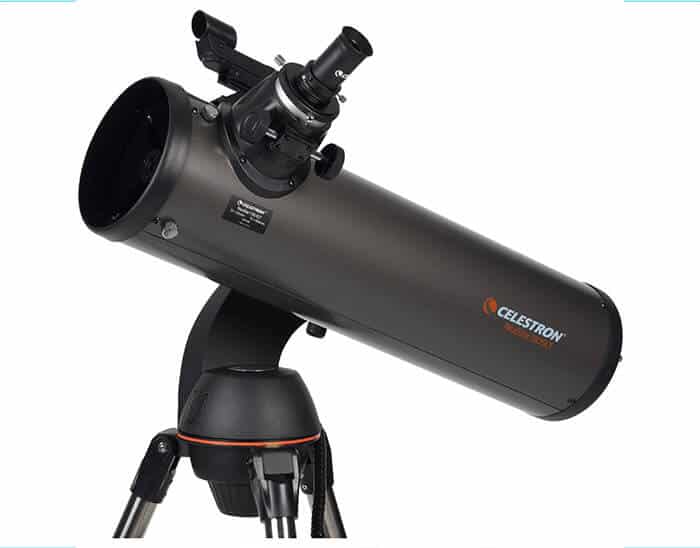

APERTURE
114mm

FOCAL LENGTH
900mm

MOTORIZED
No

Mount type
Equatorial
Overall:
The high-quality and durable materials make the Celestron 21045 PowerSeeker EQ telescope an excellent choice for the beginner astronomer. It’s affordable, portable but yet powerful.
This telescope utilizes German equatorial mount, which offers improved control over the telescope’s body and tracking process. It offers an astonishing view of the dim stars and whole constellations with the attached lenses bundle.
Specs:
- Magnification: 269 x
- Focal length: 900 mm
- Aperture: 114 mm
- Weight: 19 lbs.
- Focal ratio: 8
- Light-gathering power: 265 x
- Good price-to-quality ratio
- Delivers clear and crisp images
- No chromatic aberration issues
- Includes 3 x Barlow lens and two excellent eyepieces
- Effortlessly tracking for the sky objects using the equatorial amount
- Coated lenses with high transmission coatings for enhanced image brightness and clarity
- The mount cannot support a heavier camera
- The telescope is hard to calibrate without a collimator
- The finder and the focuser are made from low-quality plastic
How To Maintain Your Telescope
Proper lens care is crucial to getting the most satisfying long-term use from your Celestron telescope. Lens care is quite simple and can be summed up in five easy steps. A word of caution: this method only works on lenses, not the mirrors in a reflector telescope.
An ounce of prevention is worth a pound of cure, so the first step is to always use the lens cap. If your telescope doesn’t have one, improvise. You can use a shower cap, plastic sandwich bag, or plastic wrap.
If the damage is done and dust is on your lens, your next step has to be using air to remove loose particles. DO NOT blow on the lens because your breath contains a lot of moisture. Use the air blower from a cleaning kit or compressed air. You can easily find a solid lens cleaning kit on Amazon.
After blowing the loose dust off your lens, use a soft brush to remove any stubborn particles. Use he air blower or compressed air on the brush first just in case there is any dust on it.
You may not need to perform this last step. Using air and a brush may clean your lens entirely. If you can still see eyelash oil or a fingerprint, then you need to use a dry microfiber cloth. A few passes with the cloth should leave your lens perfectly clean, but…
If the dry cloth doesn’t clean your lens, you may need to apply lens cleaner. Apply one or two drops of the cleaner in a lens cleaning kit to the cloth. If you do not have a kit, you can use isopropyl alcohol. Never apply the cleaner to the lens because it can pull dirt into your telescope if not completely removed. After you have cleaned the lens with the moist section of cloth, use a dry spot and go over your lens again, being careful to remove all excess fluid. If the grime is still hanging on tenaciously, then put a few drop of cleaning fluid on a Q-tip and apply a little bit of pressure to the stubborn spot.
Conclusion
After our comprehensive review of the 7 best Celestron telescopes, you got a good overview on the different Celestron models and their specs. When you decide to buy one, try to define your requirements and the purposes of getting a telescope, whether it was for deep-sky monitoring, astrophotography, near-Earth objects tracking, terrestrial observations, or as a gift for a kid.
Also, be careful with the telescope components as they’re made of sensitive materials with precise standards. They must be assembled in a specific manner and work in a specific environment to avoid damages.
For a beginner, we recommend the Celestron NexStar 127SLT as it has high specs and it’s gentle on the wallet.
No, let us know what do you think and what’s the best telescope for you?
SUBSCRIBE TO OUR WEEKLY NEWSLETTER
